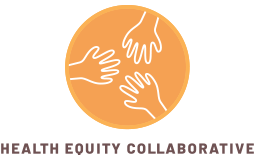16 Feb White Paper: Drivers of Rising Health Care Costs and their Impact on Vulnerable Populations
Washington DC, (February 16, 2022) – Today, the Health Equity Collaborative released a white paper titled “Drivers of Rising Health Care Costs and their Impact on Vulnerable Populations“.
Executive Summary:
Health care costs in the United States are rising, and the impact is felt most acutely among vulnerable populations. Average insurance premiums, which total $21,342 per family of four, and other expenses like out-of-network specialists and prescription drugs have reached record levels. Overall, national health care spending is close to $4 trillion per year. Meanwhile, median family income has not kept up. Thus, both insurance payments and tax burdens related to health care constitute a greater share of family expenses.
The National Institutes of Health defines “vulnerable populations” as “Americans who are racial, ethnic, sexual, or religious minorities, the elderly and disabled, the uninsured or socioeconomically disadvantaged, and those suffering from rare medical conditions.” Vulnerable populations suffer disproportionately from rising health care costs because of discrimination in the process of finding stable employment, culturally normative outreach, and processes by health care suppliers, and all the unique challenges of structural racism and other forms of prejudicial discrimination, such as lack of resources often resulting from historic injustice, and unique needs that are, in the aggregate, overlooked by society.
This white paper argues that the answer is not to accept disparities as an unchangeable fact, nor to treat the rectification of disparities as an additional expense, but to view historic inequity as an unacceptable waste of potential and resources. This paper looks closely at what is causing the rising costs and finds that hospitals constitute the largest driver by far, accounting for 33 cents of every dollar spent on health care in the U.S. Meanwhile, expenses that receive far more attention account for a far smaller share. Retail pharmaceuticals, for example, account for 9 cents, while medical equipment accounts for 3 cents of every health care dollar.
To remedy the social inequities surrounding rising health care costs, health professionals and policymakers must identify opportunities to use interventions and education to reduce the unique health risks that vulnerable populations face. Health care budget planners must also take into account the cost savings of preventing chronic health problems. Where soaring health costs are attributable to monopolistic pricing, the answer to helping the underprivileged is as simple as finding ways to introduce competition that drives prices down. And when the answer is not so simple, legislative reforms must restore equity by taking money out of the hands of third-party price manipulators and putting it back in the pockets of those who need it most.
Most importantly, this white paper argues that all stakeholders must remember that keeping Americans healthy and fighting for justice on behalf of racial, sexual, religious, and ethnic minorities are not two different things, they are the same thing.
HEC White Paper - Drivers of the Cost of Health CareAbout the Health Equity Collaborative:
The Health Equity Collaborative is a national coalition of organizations that fights for underserved and underrepresented communities in the healthcare sphere. The Collaborative promotes health equity, diversity, and inclusion through an intersectional, holistic approach and fights for social justice and representation in the policymaking process.


